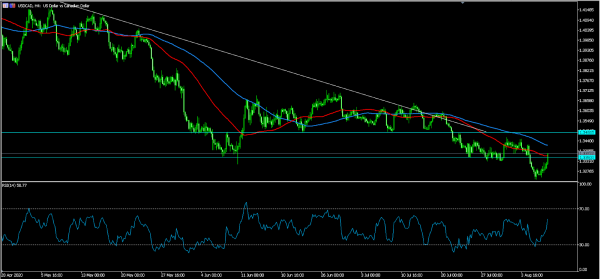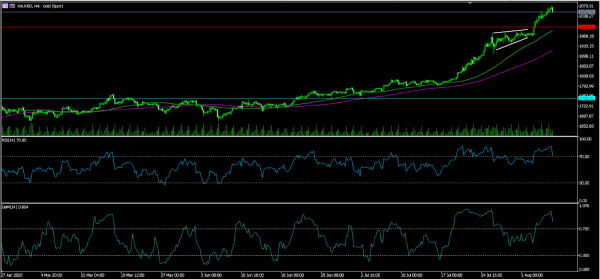The Australian dollar fell slightly even after impressive economic data from China. According to the country’s statistics office, exports rose by 7.2% in July from just 0.5% in June. That was the fastest pace of exports since January this year. In the same month, imports declined by 1.4%, leading to a sharp increase in the country’s trade surplus. The surplus rose from $46 billion to $62.33 billion. In contrast, US exports rose by 9.4% to $158.3 billion in June while imports rose by 4.7%, pushing the deficit to about $50.7 billion.
The US dollar rose against most currencies ahead of the important nonfarm payrolls numbers. Analysts polled by Reuters expect that the economy added more than 1.6 million jobs in July after adding 4.8 million in the previous month. They see manufacturing payrolls increasing by 253K. At the same time, they expect the unemployment rate to drop from the previous 11.1% to 10.5% while average hourly earnings rose by 4.1%. The currency is also gaining because of the growing friction between the US and China. In a statement, Donald Trump gave American companies 45 days to stop dealing with TikTok and WeChat.
The Canadian dollar declined against the US dollar after Donald Trump unveiled a new trade conflict with Canada. In a statement, the president said that he would impose new tariffs on Canadian aluminium in order to protect American industry. Canada vowed to retaliate. In addition, the currency is waiting for employment data that will come out later today. Analysts expect that Canada will add more than 400K jobs in July after adding another 952K in the previous month. They also expect the unemployment rate to fall to 11%.
EUR/USD
The EUR/USD pair declined from a high of 1.1908 to the current 1.1827. On the four-hour chart, the pair seems to be consolidating at the current level ahead of the nonfarm payroll numbers. The pair is still above the 50-day and 100-day exponential moving averages while the Relative Vigour Index (RVI) has started to decline. The pair is likely to remain at the current range as traders wait for the upcoming payrolls data from China.
USD/CAD
The USD/CAD pair rose during the Asian session as traders reacted to the new trade conflict between the US and Canada. The pair is trading at 1.3370, which is higher than this week’s low of 1.3230. On the four-hour chart, the price has just moved slightly above the 50-day EMA while the RSI rose from the oversold level of 29 to 30. The pair is likely to continue rising as bulls aim for the next resistance level at 1.3400.
XAU/USD
The XAU/USD pair dropped to an intraday low of 2048 from yesterday’s high of 2077 mostly because of the stronger dollar. On the four-hour chart, the price is significantly higher than the short and long-term moving averages while the RSI has moved from the overbought level of 86 to the current level of 70. The DeMarker too has dropped, meaning that the price may continue to fall as bears target the important level of 2,000.













